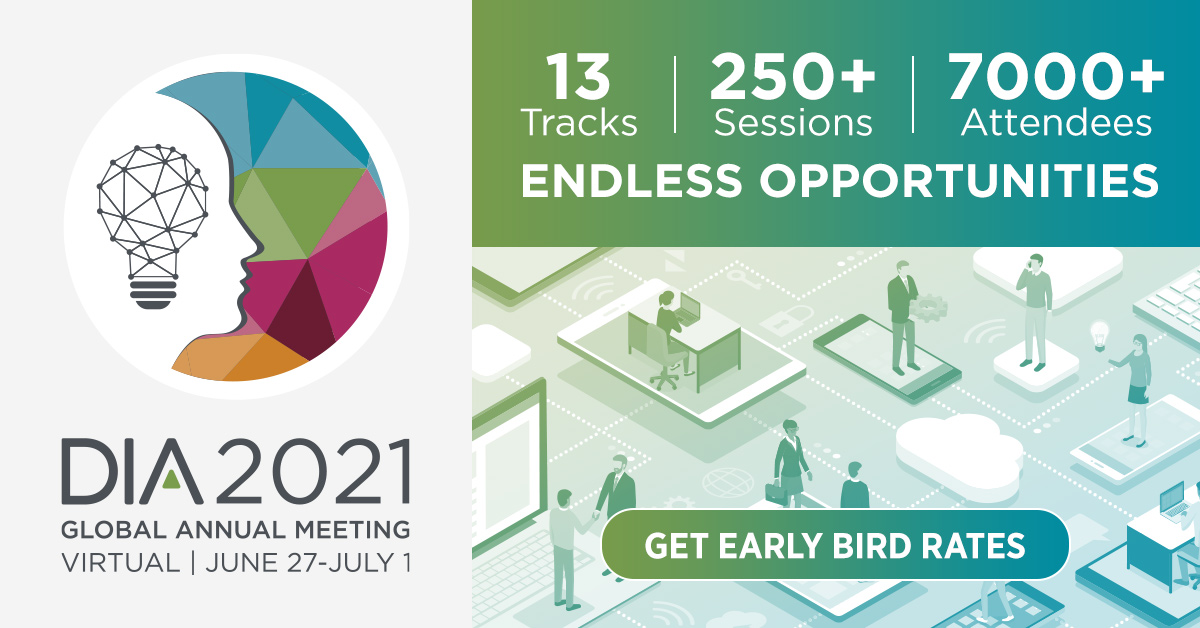Table of Contents
WE ARE DIA
EXECUTIVE LEADERSHIP
Subscribe
Love Global Forum‘s new online format? Subscribe today and never miss an issue.
Editorial Board
Content stream editors
Gary Kelloff US National Institutes of Health
David Parkinson ESSA Pharma, Inc.
regulatory science
Yoshiaki Uyama Pharmaceuticals and Medical Devices Agency (PMDA)
Adora Ndu BioMarin Pharmaceutical, Inc.
Patient engagement
Deborah Collyar Patient Advocates In Research (PAIR)
Lode Dewulf Corvalus
VALUE AND ACCESS
Monika Schneider Shionogi
Editorial Staff
Alberto Grignolo, Editor-in-Chief Parexel International
Ranjini Prithviraj, Global Associate Director, Content Collaboration DIA Scientific Communications
Sandra Blumenrath, Science Writer DIA Scientific Communications
Chris M. Slawecki, Senior Digital Copyeditor DIA Scientific Communications
Regional Editors
David Mukanga Bill and Melinda Gates Foundation
ASEAN
Silke Vogel Duke-National University of Singapore Medical School
AUSTRALIA/NEW ZEALAND
Richard Day University of New South Wales, Medicine, St. Vincent’s Hospital
CANADA
Judith Glennie JL Glennie Consulting, Inc.
Megan Bettle Health Canada
CHINA
Ling Su Shenyang Pharmaceutical University, Lilly Asia Ventures
Europe
Thomas Kühler Sanofi R&D
INDIA
J. Vijay Venkatraman Oviya MedSafe
JAPAN
Akiko Ikeda Janssen Pharmaceutical K.K.
LATIN AMERICA
Cammilla Gomes Roche
MIDDLE EAST
Inas Chehimi Novartis
USA
Ebony Dashiell-Aje BioMarin
Young Professionals Editor
DIA Membership
Bringing together stakeholders for the betterment of global health care.
Alexion Pharmaceuticals
Janssen Pharmaceuticals
Minoryx Therapeutics
Bayer
Roche
Biomarin
arlier this year, DIA held its first Regulatory Affairs Leadership Forum as part of DIA Europe 2020. The proposal was ambitious: to gather a diverse panel of people who work in different fields and discuss the value and skills that regulatory professionals bring to medicines research and development and the pharmaceutical industry of the future. This was also the first time DIA Europe was held virtually, and as such a perfect moment to reflect on the role of regulatory professionals in navigating crisis situations, such as the COVID-19 pandemic.
Key Takeaways
- Both industry regulatory teams and government regulators have been working under extreme circumstances to identify and deliver much needed solutions to this pandemic, with a collaborative spirit, constant dialogue, and “all-hands-on-deck” approaches.
- It is in times of crisis that leadership shows its mettle, and this pandemic evidenced the need for empathy, resilience, and strategic thinking to successfully address the global regulatory and public health challenges.
- Together, we must build upon the many lessons learned during this time of crisis to continuously adapt across the regulatory professions to ensure we are prepared to meet the future needs of R&D.
ver the past year, the Coronavirus Disease 2019 (COVID-19) pandemic has impacted the pharmaceutical industry, particularly clinical trials. Safety of subjects and clinical study staff safety is a major concern, resulting in modifications to study operations, including enrollment/recruitment delays, subject retention, protocol amendments/modifications, subject diversity and budgets, statistical analyses and validity of results, and regulatory interactions.
Addressing these issues requires real-time revisions and updates to clinical study protocols and clinical study reports (CSRs). As a result, there is an increasingly important role in thoughtfully updating these documents to enable study continuation, subject safety, data integrity, and regulatory compliance. This article provides an overview of the impact of the COVID-19 pandemic on clinical trial operations, required protocol adjustments, and steps taken to address some of the most pertinent issues resulting from the pandemic.
![]() Podcasts
Podcasts
Jump In, Be Brave, Have the Conversation – Reducing Health Disparities among Minority Patients
M. Durham
White Paper
Proceedings: DIA China 2020
Proceedings from DIA China 2020
Proceedings: DIA China 2020
Janssen R&D, China
emember the 2015 internet sensation about dress color? It is a reflection that people can view things a lot differently than you might think.
The “Benefit-Risk” (BR) assessment of a drug is far more complicated than determining dress color. So, it is not uncommon that various stakeholders – including sponsors, regulatory agencies, patients, or payers – can have different conclusions about the BR assessment of a drug.

Key Takeaways
- BR assessment is a continuous iterative process during a product’s lifecycle.
- There are great demands for transparency and efficiency in BR assessments and communications from all stakeholders.
- Using a combination of BR methodologies (qualitative and/or quantitative) is a growing trend.
- Interest in engaging patients in BR assessment is also growing.
Proceedings: DIA China 2020
Are we ready for the future?
Sanofi, Inc.
he COVID-19 outbreak became a public health emergency of international concern and a global pandemic very quickly. As of this writing, COVID-19 has infected more than 50 million people and caused 1.2 million deaths worldwide. Industry and academic researchers took prompt action to search for a treatment. Although more than 3,400 anti-COVID clinical trials have been launched globally, there is still no effective drug to cure COVID-19.
Proceedings: DIA China 2020
Increased Regulatory Focus on Precision Medicine in China
Ningxia Western Cloud Data Technology Co. Ltd.
apid development of personalized (also known as precision) medicine has made separating patients into different groups and customizing treatments or products based on their genomic information an important trend.
Development of companion diagnostics (CDx) as powerful tools in precision medicine typically follows one of three pathways: co-development, bridging, and follow-on. Co-development is the most ideal and cost-effective CDx pathway: It is conducive to screening target patients specifically and identifying drug targets accurately, reducing development cost and cycle times for pharmaceutical companies. The DIA China 2020 session Driving Co-Development of Therapeutic Drugs and Companion Diagnostics for Precision Medicine and Optimizing the Clinical Trial Design reviewed the regulatory framework for drug and diagnostic co-development and how to overcome the inevitable hurdles to quickly delivering innovative drugs and diagnostics to patients.
![]() DIA DIRECT: COVID-19 Webinars
DIA DIRECT: COVID-19 Webinars
As a response to the current pandemic, and with the support of the DIA Knowledge Brigade, we have brought together experts from across the global healthcare product development continuum for an ongoing series of live, virtual panel discussions on how we continue to work towards our shared mission of accelerating therapies to patients, during the coronavirus crisis. Watch Post-Pandemic Paradigm Shifts and New Dimensions of Value below now.
For other webinars in this DIA DIRECT COVID-19 Webinar Series, please visit our DIA Now In-Focus COVID-19 Resource Center.
Australia TGA 2020-21 Business Plan
COVID-19, Digital Transformation, Regulatory Work-Sharing, Cell Therapy, and Diagnostic Tests
recently discussed TGA’s Business Plan for 2020-21 with John Skerritt, Deputy Secretary for Health Products Regulation in the Department of Health (with responsibility for the TGA), and asked a number of questions about the Plan in the following Q&A.
John Skerritt: We have divided the Business Plan into an agenda and actions for our four activity streams:
- Product regulation and safety – through core regulatory activity and business process improvements.
- Regulatory reform –2020-21 will be the final year of implementation of the recommendations from the Review of Medicines and Medical Devices Regulation, the implementation of the Action Plan for Medical Devices, and a number of other reforms.
- International engagement –international information sharing, work sharing and regulatory convergence, as well as programs for regulatory strengthening and medicines testing in our region.
- Regulatory education and compliance – through education, monitoring, and targeted compliance and enforcement actions.
Around the Globe
Summary and Impact of Pharmaceutical & Medical Device Act Amendments in Japan
Janssen Pharmaceutical K.K
his summary of the revision of Japan’s Pharmaceutical Affairs Act (PMD-Act) issued in December 2019 focuses on two of its three pillars and their impact on companies in Japan. The contents of this revision are broad, they include three pillars and will be implemented by the Government in a stepwise approach over three years:
- Improvement of systems from development to post-marketing in order to provide pharmaceutical and medical device products safely, quickly, and efficiently.
- Review of the community roles of pharmacists and pharmacies to improve patient familiarity and peace of mind with using pharmaceutical products.
- Establishment of regulatory compliance systems to further trust in the healthcare community of Japan.
This article will explore the implementation status and anticipated future impacts of pillars 1 and 3.
Career Column
Pfizer, Inc.
Pfizer, Inc.
Pfizer, Inc.
he pharmaceutical industry Medical Information (MI) function has a critical customer-facing role to provide unbiased, evidence-based, and scientifically balanced information to its customers in a timely manner. The phactMI Code of Practice identifies three core elements to which MI departments should adhere: 1) clinical and pharmaceutical expertise 2) scientific balance of medical responses; and 3) quality standards. MI professionals typically have advanced science or healthcare degrees in order to respond to medical inquiries with scientific and medical expertise. With the advanced degrees, MI colleagues are better positioned to take on new challenges with courage and integrate their critical thinking skills in day-to-day tasks of communicating health information to customers.
Career Column
Tackling Problems Unique to Starting Your Career During a Pandemic
efore becoming pharmacists, we accumulate practical experiences in school applicable to our post-graduation careers. However, one thing we couldn’t learn from first-hand experience was how our profession would need to adapt in response to a pandemic. COVID-19 has caused unprecedented change in the workplace for many pharmacists, which can be overwhelming for those just starting their careers.








